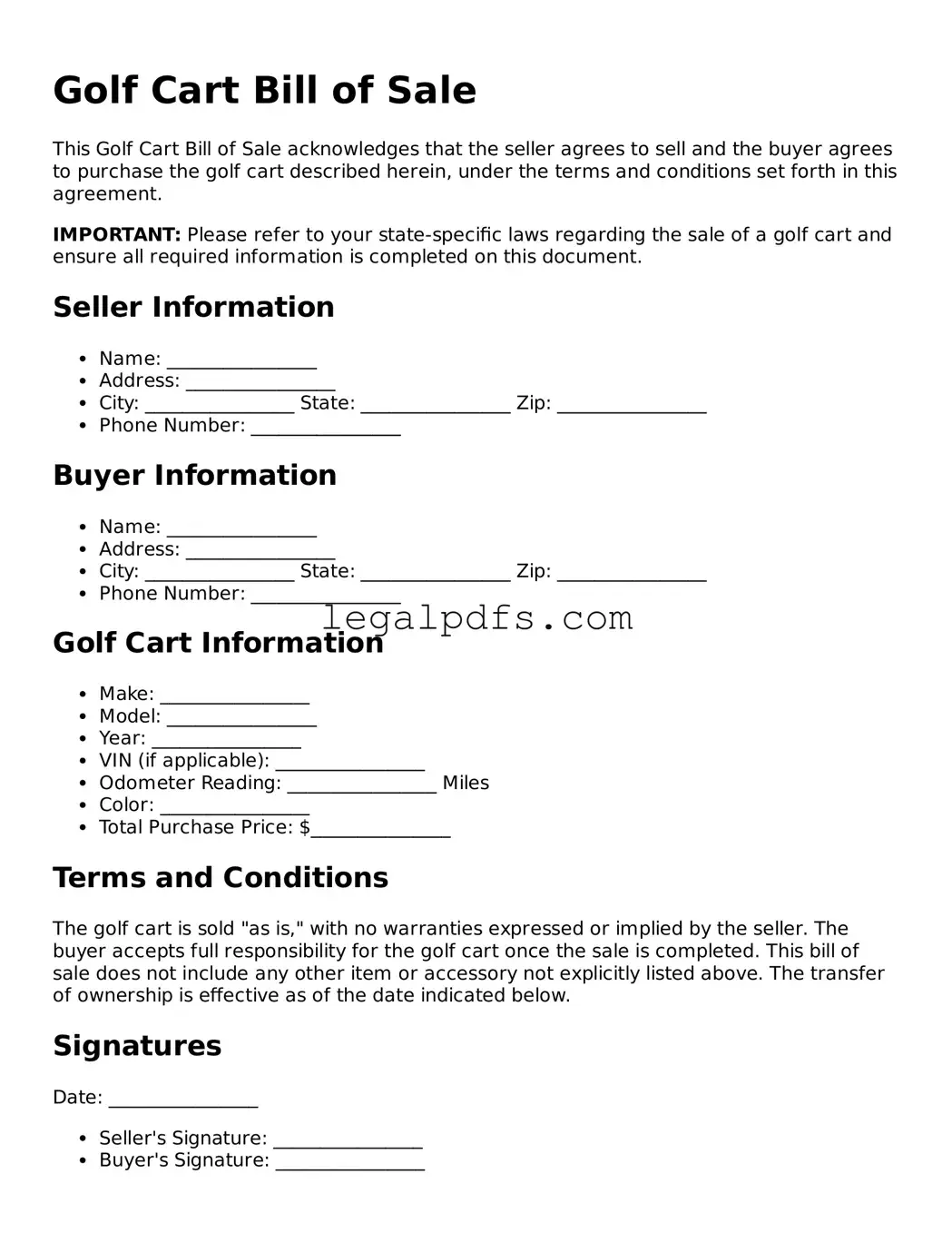Filling out a Golf Cart Bill of Sale form might seem straightforward, yet it's surprisingly easy to make mistakes. These errors can range from inconsequential to ones that could potentially void the entire transaction. First and foremost, people often overlook the necessity of including the full, legal names of both the buyer and the seller. Accuracy here is crucial, as any discrepancy can lead to legal complications or a delay in the transfer of ownership.
Another common blunder is not thoroughly describing the golf cart. A thorough description encompasses the make, model, year, and, most importantly, the serial number or VIN (Vehicle Identification Number). Such details are crucial for the identification of the cart, especially in scenarios where issues arise post-sale. Without a complete description, establishing the golf cart’s identity in a legal context can become challenging.
The condition of the golf cart is often misrepresented or inadequately detailed. Sellers should provide an honest and detailed account of the golf cart's condition, including any known issues or defects. This transparency helps to avoid disputes after the sale. If a seller fails to disclose a fault, they might find themselves in hot water, legally speaking.
People sometimes fail to specify the sale terms clearly. Whether the payment is to be made in installments, or if there are conditions to be met post-sale, clearly outlining these in the bill of sale is vital. Vagueness here can lead to misunderstandings and, potentially, disputes that could have been easily avoided.
A crucial detail that’s often missed is the sale date. This piece of information is not only important for record-keeping but also has legal implications, especially if any issues arise shortly after the sale. The sale date can establish or negate certain liabilities.
Another mistake is forgetting to include the sale price or incorrectly stating it. The agreed-upon amount should be clearly written out in the document to avoid any confusion or legal issues regarding the transaction amount.
Signature is where many trip up. Both parties need to sign the document for it to be legally binding. However, it’s not uncommon for individuals to overlook this step or assume that a verbal agreement suffices. It does not.
Witnesses and notarization, while not always required, are often omitted from the form. Having a witness or notary public sign the bill of sale can provide an additional layer of legal protection and authenticity to the transaction.
One major pitfall is not checking local laws and requirements. Depending on where you live, there might be specific stipulations or additional information required for a Golf Cart Bill of Sale to be considered valid.
Lastly, failing to provide or keep a copy of the bill of sale is a mistake too many make. Each party should have a copy for their records. This document serves as a receipt and a legal record of the transaction, which could be invaluable in resolving any future disputes.
By avoiding these common mistakes, buyers and sellers can ensure a smoother transaction and protect themselves legally. Paying attention to the details, no matter how small, can save a lot of trouble down the line.
